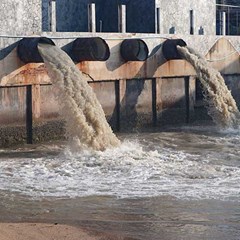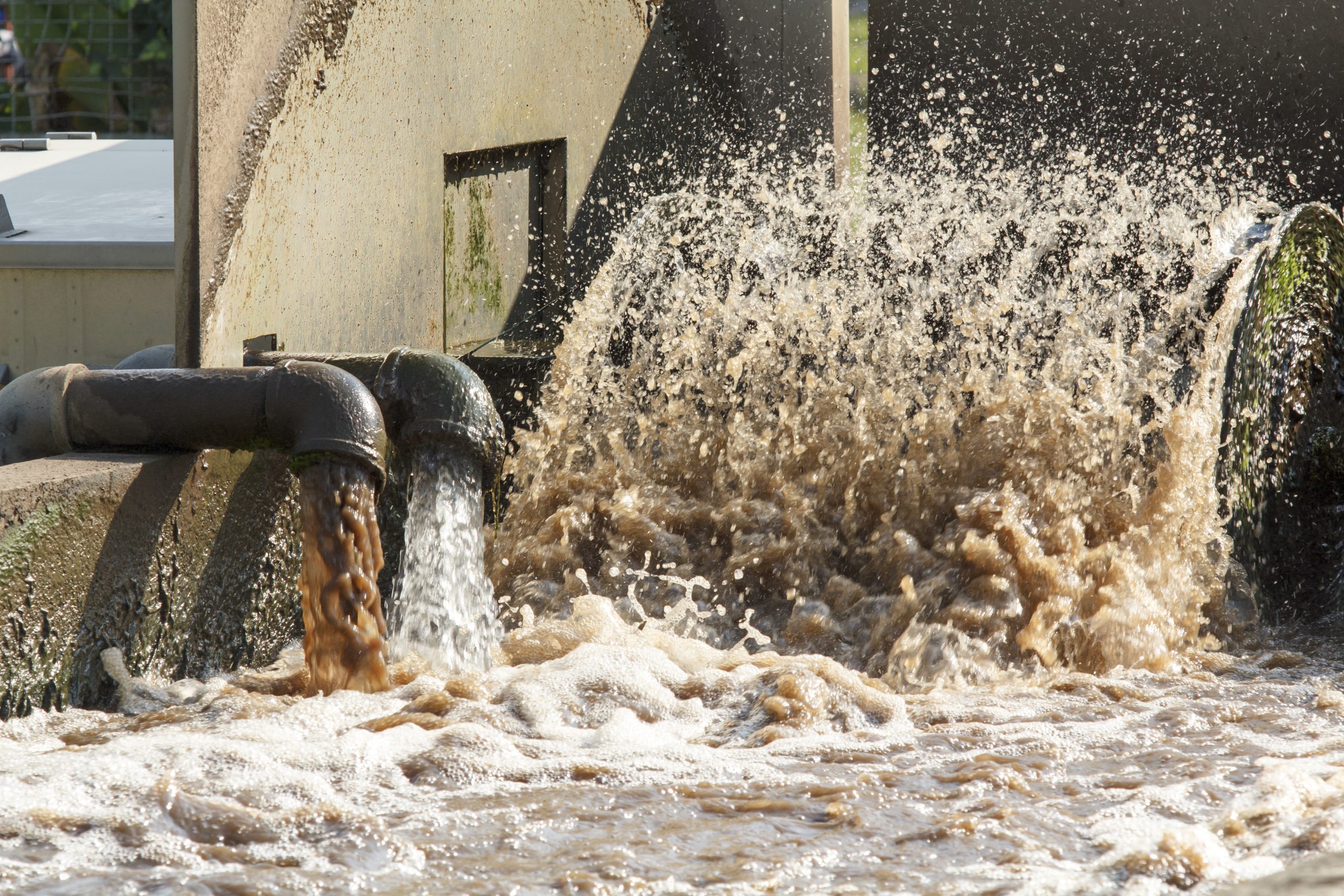Trick Methods in Industrial Waste Water Therapy Procedures
The treatment of commercial wastewater is a critical aspect of environmental administration, involving a variety of strategies made to mitigate the impact of pollutants. Improvements in modern technologies such as membrane layer purification and progressed oxidation procedures offer innovative solutions for enhancing treatment efficacy.
Physical Treatment Methods
How efficiently can physical treatment methods address the complexities of industrial wastewater? Physical treatment techniques play a critical function in the initial phases of wastewater management, concentrating largely on the removal of solids and huge particulates. Strategies such as flotation, purification, and sedimentation are important for decreasing the concentration of suspended solids, consequently boosting the effectiveness of succeeding treatment procedures.
Sedimentation includes the gravitational settling of solids, permitting the splitting up of larger products from the wastewater. This method is especially effective in clarifying water prior to organic or chemical treatments. Filtering, on the other hand, makes use of various media to catch particulate matter, making certain that smaller sized contaminants are eliminated. This technique can be tailored to fit various kinds of industrial effluents, producing clearer effluent streams.
Furthermore, flotation methods, which utilize air bubbles to lift suspended solids to the surface for elimination, work in dealing with wastewater with high focus of fats, oils, and greases. On the whole, physical treatment approaches function as a crucial primary step in the comprehensive monitoring of commercial wastewater, ensuring that the tons on succeeding therapy phases is lessened and enhancing total treatment efficacy.
Chemical Therapy Techniques
While physical therapy techniques prepared for effective wastewater administration, chemical therapy strategies are necessary for resolving the extra intricate contaminants typically discovered in commercial effluents. These approaches use numerous chemical agents to speed up, reduce the effects of, or oxidize unsafe compounds, making sure an extra thorough removal of pollutants.
One typical strategy is coagulation and flocculation, where chemical coagulants such as light weight aluminum sulfate or ferric chloride are included in promote the gathering of suspended bits. This procedure enhances solid-liquid separation, lowering turbidity and improving water high quality. In addition, neutralization processes are utilized to readjust the pH of wastewater, using acids or bases to reduce the effects of acidic or alkaline streams, specifically.
Oxidation-reduction reactions play a vital function in derogatory organic pollutants and microorganisms. Chemical oxidants like chlorine, hydrogen, or ozone peroxide are used to damage down intricate organic compounds, making them less damaging or extra biodegradable. Additionally, advanced oxidation processes (AOPs) integrate several oxidation methods to improve contaminant removal efficiency.
Biological Treatment Processes
The efficiency of wastewater treatment is substantially improved by organic treatment processes, which harness the natural metabolic activities of microorganisms to break down organic matter and remove pollutants. Industrial Waste Water Treatment. These procedures largely entail anaerobic and cardiovascular digestion, each tailored for specific types of wastewater
Aerobic therapy procedures use oxygen to support microbial growth, advertising the failure of natural contaminants into co2 and water. Usual techniques include activated sludge systems, where oygenation storage tanks help with the mixing of wastewater with microbes, and flowing filters, which motivate biofilm advancement on media surfaces.
Alternatively, anaerobic therapy processes take place in the absence of oxygen, utilizing anaerobic microorganisms to disintegrate raw material, leading to biogas production, an eco-friendly energy resource. Anaerobic digesters are commonly employed in commercial settings for this objective, efficiently reducing the quantity of sludge while generating important biogas.
The choice of an organic treatment approach depends upon wastewater characteristics, treatment objectives, and regulatory criteria. The assimilation of biological procedures in wastewater treatment not just enhances toxin removal effectiveness yet likewise advertises sustainability by reducing chemical use and sustaining resource recuperation.
Advanced Oxidation Processes

Usual AOP techniques include Fenton's ozonation, reagent, and photocatalysis. Fenton's reagent, a mix of hydrogen peroxide and ferrous iron, militarizes the development of hydroxyl radicals, making it efficient for treating this post wastewater having phenolic compounds and various other stubborn materials.
AOPs supply a number of benefits, including minimized sludge manufacturing and the capacity to treat wastewater with high concentrations of organic contaminants. The execution of AOPs calls for mindful consideration of operational parameters and cost-effectiveness, making sure that these sophisticated techniques are appropriately incorporated into existing wastewater therapy systems.
Membrane Filtration Technologies

Microfiltration is efficient for getting rid of suspended solids and germs, while ultrafiltration targets smaller sized organic particles and infections. Nanofiltration connects the gap in between ultrafiltration and reverse osmosis, successfully removing divalent ions and organic compounds. Reverse osmosis supplies the highest degree of filtration, made use of largely for desalination and removing mono-valent ions.
Membrane technologies provide various advantages, including low energy consumption compared to conventional treatment methods, modular design for scalability, and the potential for water recovery and reuse. However, challenges such as membrane fouling and the need for regular maintenance must be addressed to ensure system efficiency. Generally, membrane filtration technologies stand for a crucial part of contemporary industrial wastewater therapy methods, promoting sustainability and resource conservation in water monitoring.
Final Thought
To conclude, industrial wastewater therapy utilizes a varied selection of methods, including physical, chemical, organic, and advanced methods. Each technique plays an important role in properly attending to different contaminants, boosting water high quality, and advertising resource sustainability. The integration of these strategies promotes a comprehensive therapy technique, ensuring that industrial effluents fulfill regulative criteria while lessening ecological influence. Proceeded innovations in these approaches will certainly even more boost the effectiveness and performance of wastewater treatment procedures in industrial settings.
The therapy of commercial wastewater is a vital facet of ecological management, including an array of techniques developed to alleviate the influence of contaminants.How successfully can physical therapy approaches address the complexities of industrial wastewater?Advanced oxidation processes (AOPs) represent an innovative strategy in commercial wastewater treatment, designed to efficiently deteriorate natural toxins that are often resistant to conventional treatment methods (Industrial Waste Water Treatment).In conclusion, industrial wastewater treatment employs a diverse range of techniques, including physical, chemical, biological, and advanced methods. Proceeded innovations in these methodologies will certainly reference better boost the performance and performance of wastewater therapy procedures in commercial settings